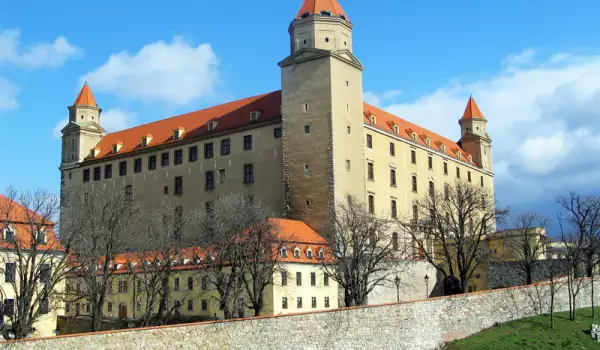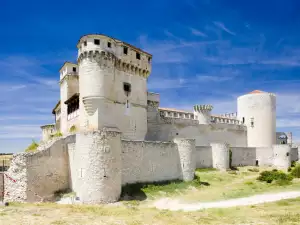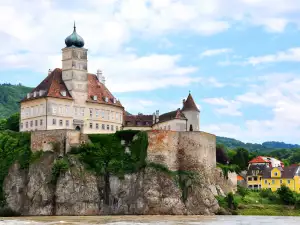Bratislava Castle

Bratislava is the capital of Slovakia, a city situated on both sides of the Danube River, about 60-70 km along from Vienna. Laying dominant on a hill above the town is the beautiful Bratislava Castle, from which the view down to the town and the river is really fascinating. The sculpture resembles a flying saucer, and the palace is something like the emblem of Bratislava.
The massive rectangular building of Bratislava Castle with its four towers located in each corner of the fortress stands on an isolated rocky hill, which is part of the Little Carpathians mountains, immediately above the Danube in the center of Bratislava.

As a major stronghold in the Slovak capital, Bratislava Castle is one of the most visited tourist attractions in the city. Here thousands of visitors are flooding from around the world. From the top of the castle Bratislava a view is opened even to Austria.
The history of the wound structure on the hill above Bratislava began in ancient times during the transition period between the Stone and Bronze Age. Evidence has been found of a settlement at this place during the early Iron Age, around 600-500 BC. The Roman settlement at this place dates back to the end of the first century, after which the territory was conquered by the Germanic tribes. The name of the fortress was minted on the coins by the first Hungarian King Stephen I (1000-1038) when the castle was called Preskava.
In the 11th, 12th and 13th century Bratislava Castle underwent major changes and renovations and the new basilica was built. In the 12th century the stone palace had added inside another large building and the two stone towers were built in the 13th century. The reconstruction of Bratislava in the 15th century castle saw it converted into the manifestly Gothic castle, surrounded by stone firewalls. In the eastern part the main gate was built also in Gothic style which can still be seen. The next large scale reconstruction of the fortress began in 1552 after the Hungarian state administration had moved from Buda to Bratislava.

The highest tower, which can be seen today in the palace, is the Retrieved tower dating from the 13th century, and it kept the royal jewels. The walls outside and the inside corridors contain the old Gothic and Renaissance elements. Behind the east gate is a great arcade corridor and baroque staircase leading to the Slovak National Museum. The left side of the south side of the castle are where the four halls of the treasure room are located, which was opened in 1988.
There are some very precious collections of archaeological finds and other objects found in Slovakia. The third floor is the exposure of the history of Slovakia. On the first floor of the castle Bratislava the Slovak Parliament is housed. The site of the Baroque chapel, which is located in the northern part of the castle today, has built an excellent concert hall, where most various famous concert-masters visit regularly.















